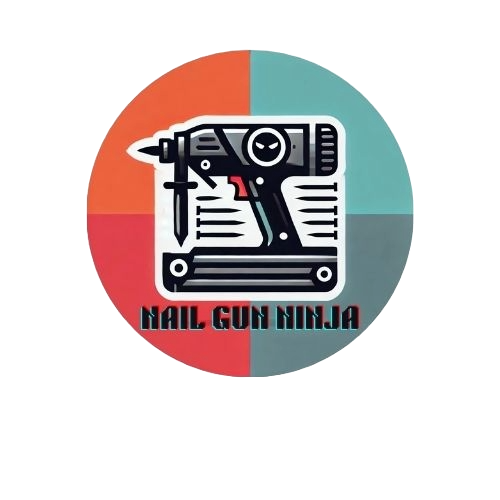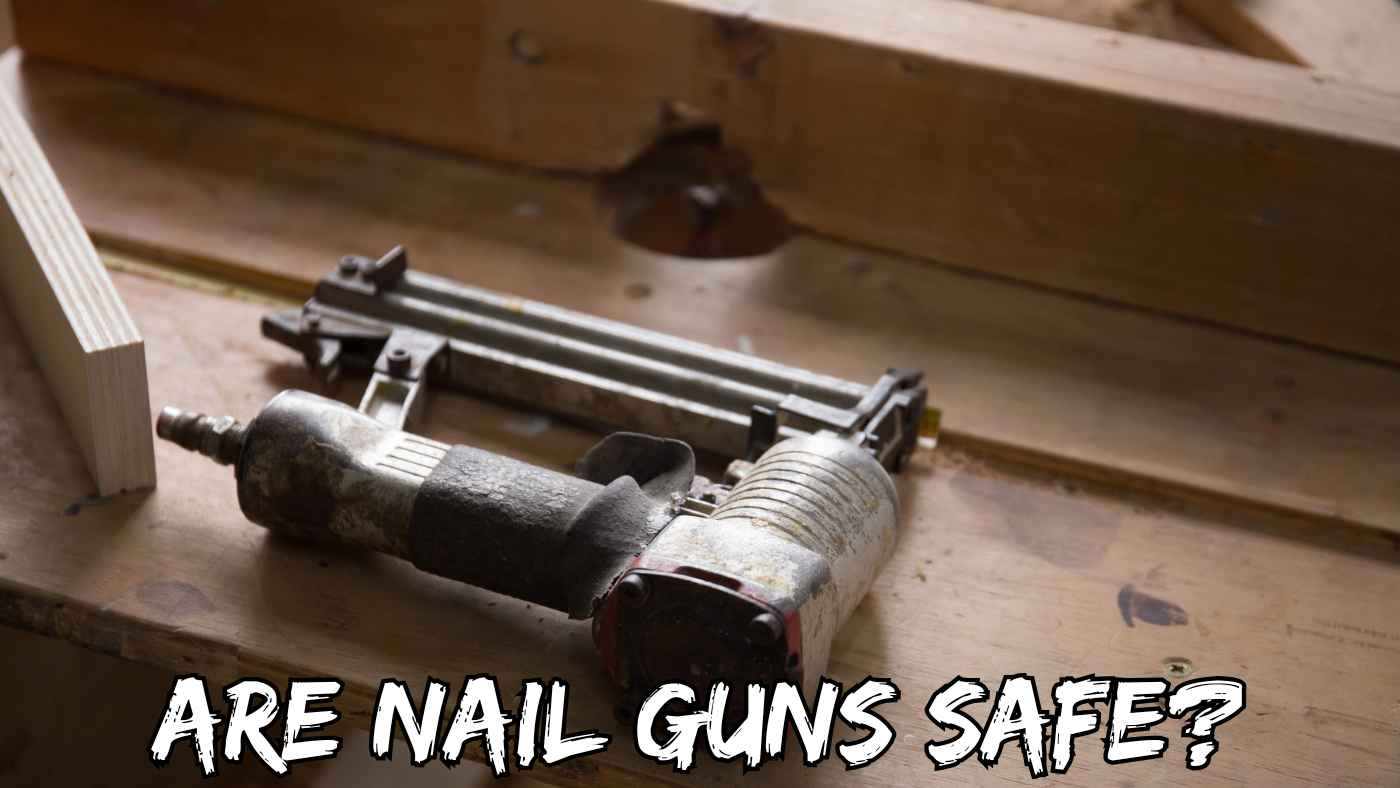Nail guns are commonly used in both professional construction and DIY projects because they make tasks like framing, decking, and installing baseboards faster and easier.
However, while they offer great benefits, nail guns come with some risks. So, the big question is are nail guns safe for the users?
Here, we will dig out if a nail gun is safe and what measures should be taken to be safe while using it.
Understanding Nail Gun Safety Risks
Before looking at the nail gun safety checklist, it’s important to understand the possible dangers of using a nail gun. The main risk is the possibility of accidental firing, which can cause serious injuries.
Nail guns can shoot nails with a lot of force, and if a nail misfires, it can go into skin, muscles, or even bones.
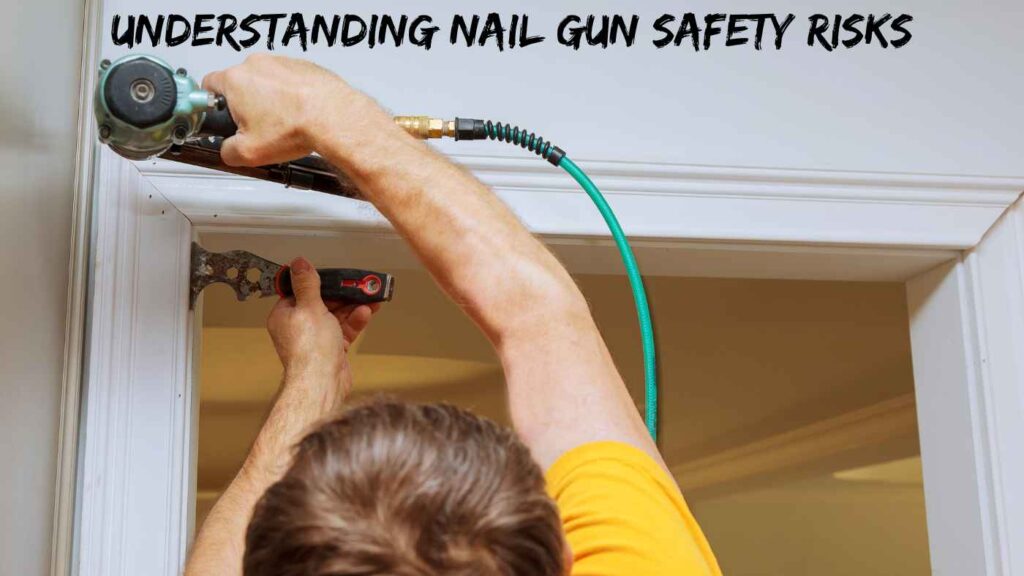
Another danger is when the tool bounces back after firing, which can throw the user off balance. The speed at which nails are driven into materials also adds to the risk.
Nail guns are made to work quickly, and if a mistake happens, it happens fast. Because of these risks, it is important to always pay attention and follow safety rules while using a nail gun.
Do Nail Guns Have a Safety?
Yes, most nail guns come with built-in safety features designed to stop accidental firing. One of the most common features is the sequential trip trigger.
This safety mechanism makes sure the nail gun will only fire when the nose is pressed against a surface. It reduces the chance of unintentional firing.
Another safety feature on many models is the trigger lock. It prevents the nail gun from firing until the user deliberately presses the trigger.
Some models also come with a sequential trigger. It requires the user to release the trigger after each shot to stop firing multiple nails at once.
These safety features make nail guns safer, but it is important to understand how does a nail gun work.
Are Nail Guns Safe for Beginners?
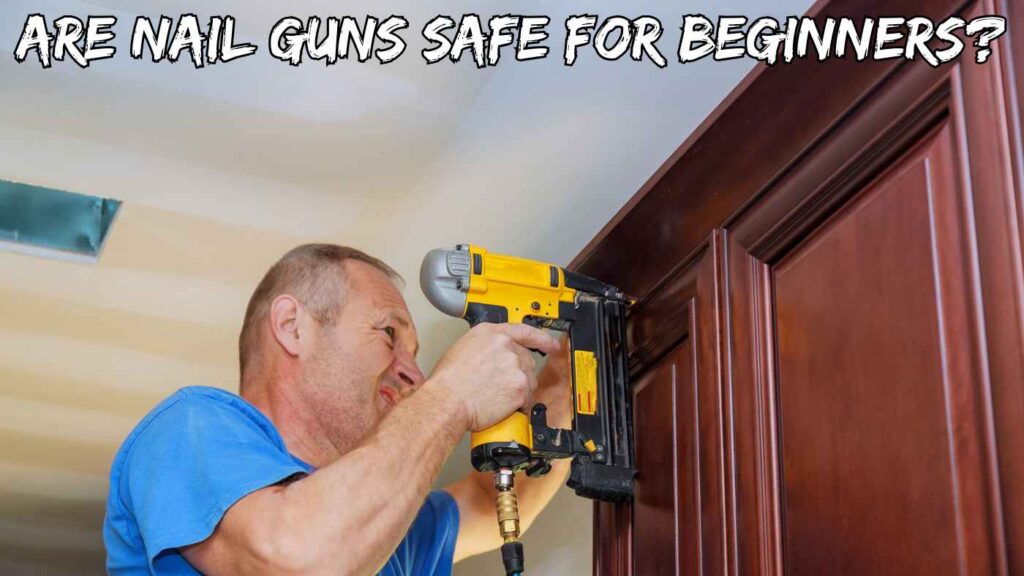
Nail guns can seem scary for beginners. Right nail gun training and safety measures can eliminate this problem.
Since beginners may not know much about how nail guns work, it’s important to learn the basics before using one. Understanding the tool’s features, the types of nails to use, and how the safety features work will help prevent accidents.
Beginners should also start with lighter nail guns like a brad nailer or pin nailer. These types are easier to handle and have less recoil. They are less risky.
It is also a good idea to practice on some scrap pieces of wood before starting real projects. This helps build confidence and improve skills.
As with any tool, beginners should always wear safety gear like goggles and heavy gloves to protect against possible injuries.
Always follow the safety instructions provided by the manufacturer.
Are Nail Guns Safe for Professionals?
A nail gun does not understand if the user is a beginner or a professional. It is impossible. Whoever you are, if you misuse it, it will react in return.
That’s why professionals who use nail guns every day, safety is still a big concern for them. While professionals usually have more experience with the tool, they should never get careless.
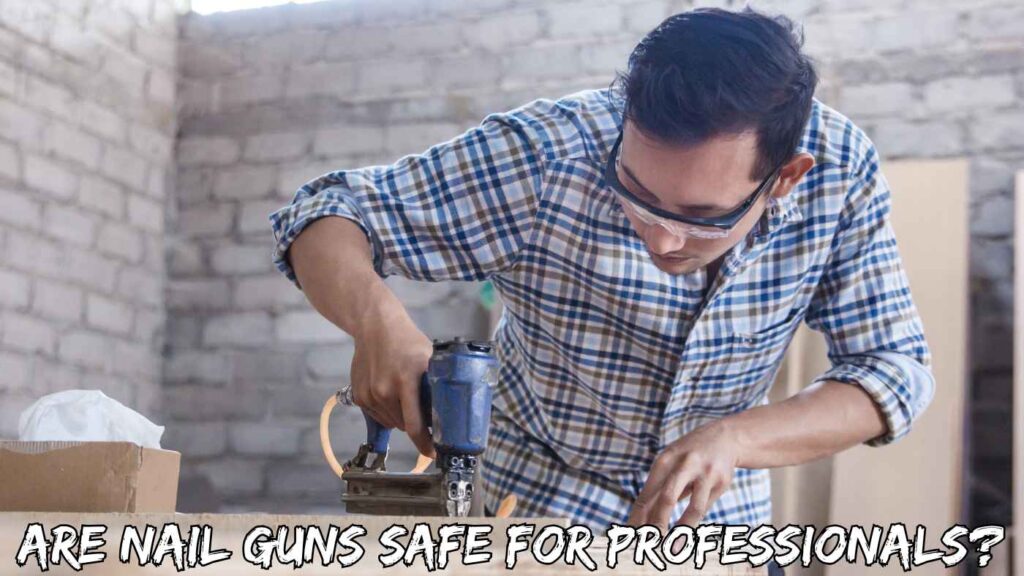
Nail guns can cause serious injuries if not handled correctly, especially on busy worksites where distractions can increase risks.
In these environments, it is important for professionals to make sure safety features like the trigger lock and contact trip are always working properly.
It’s also essential to wear the proper protective gear such as goggles and hearing protection, to avoid injuries.
Keeping the tool in good condition by cleaning it regularly and checking for wear and tear can help prevent malfunctions that lead to accidents.
Professionals should also be aware of their surroundings, making sure no one is nearby when they are using the nailing tool.
Are Nail Guns Safe for Kids?
Nail guns are not safe for kids, and they should never be one.
These tools are made for trained users because they shoot nails very fast, which can be dangerous if not used properly.
Why Are Nail Guns Dangerous for Kids?
- Shoots Nails Very Fast: Nail guns fire nails at speeds of up to 1400 feet per second which is too dangerous for a child. Even a small mistake can cause serious injuries.
- Heavy & Hard to Hold: Many nail guns are heavy and need a strong grip. Kids might not have the strength to hold or control them safely.
- Sensitive Triggers: Some nail guns can fire many nails in a row if the trigger is held down. A child might accidentally fire several nails without any meaning, which can be very risky.
- Not Aware of Safety: Kids don’t always understand how to use tools safely. They might see a nail gun as a toy and use it in a dangerous way.
Are Nail Guns Safe for Left-Handed Users?
Nail guns are mostly safe for left-handed people, but many are made for right-handed users. This can make them harder to use for lefties because the trigger, safety switch, and nail holder might feel unnatural to use.
Challenges for Left Handers
- Trigger & Grip Position: Many nail guns are shaped to fit right-handed users. They might be awkward to hold with the left hand.
- Safety Features: Some nail guns have safety parts that only work when held in a certain way. Otherwise, these tools will be harder for left-handed users to use safely.
- Harder to Load Nails: Some nail guns have a nail holder placed for right-handed users. So, it will be a little bit tricky for lefties to reload.
Solutions for Left Handers
- Look for left-friendly models: Some nail guns are made to work for both left and right-handed users, with easy triggering options.
- Practice first: Left-handed users may need extra time to get comfortable with the tool before using it for real work.
- Change your hand position: Holding the nail gun at a slightly different angle can help improve control and accuracy.
Are Nail Guns Safe for Indoor Use?
Yes, nail guns can be used safely indoors, as long as the area is clear and safe. It is important to make sure there are no people or pets in the area where the nail gun might misfire.
When using a nail gun indoors, always keep the tool pointed away from yourself and others when it is not in use.
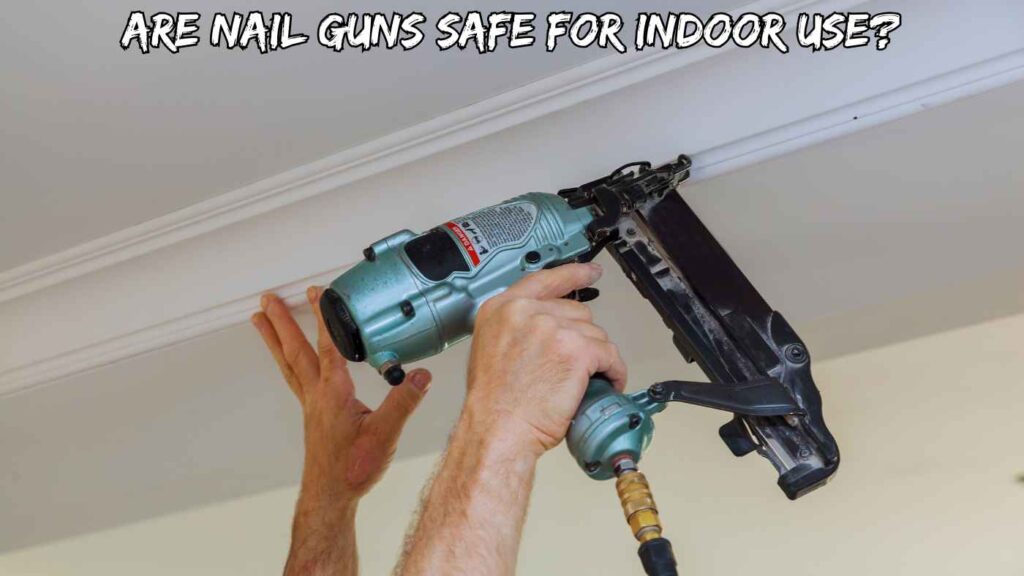
If you are using a pneumatic nail gun (air pressure), make sure the space is well-ventilated and that you keep the tool away from any materials that could catch fire.
Cordless nail guns, which do not need an air compressor are a bit easier to use indoors. However, they still should be handled carefully.
Good lighting is important when using a nail gun indoors. Poor lighting can lead to mistakes. so make sure the area is well-lit to prevent unpleasant accidents.
Are Nail Guns Safe for DIYers?
For DIYers, nail guns can be both a time saving tool and a potential risk if not used properly.
People who are new to using power tools need to take extra care when handling a nail gun.
Before starting any project, DIYers should read the instructions and guidelines for the specific nail gun they are using.
They should only use the nail gun for tasks they feel comfortable doing.
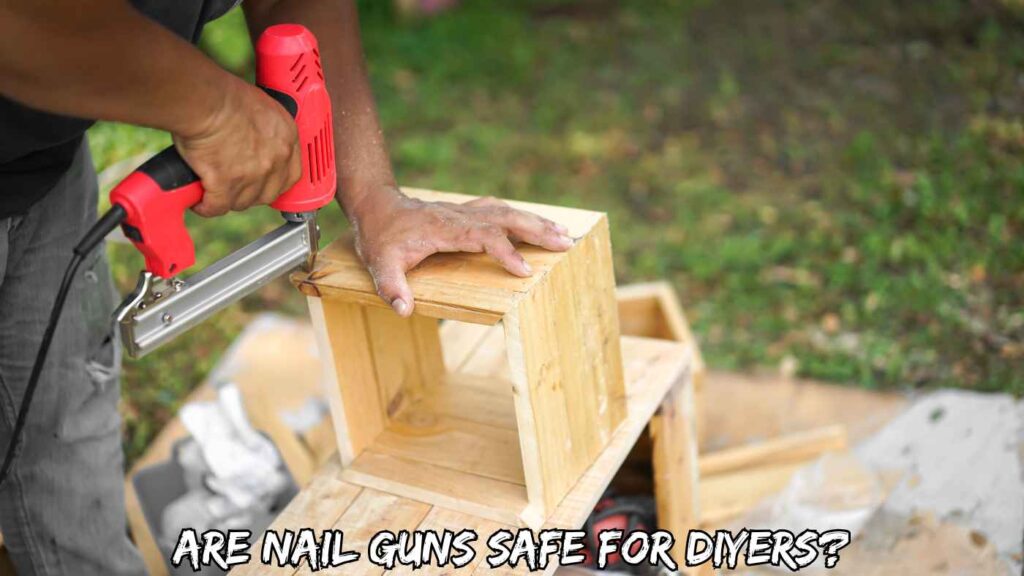
DIYers should begin with simpler tasks like installing trim or finishing work, rather than taking on complex projects that require a heavy-duty tool.
It is also a good idea to practice with the tool before starting on a real project.
As with beginners, DIYers should always wear safety gear, such as goggles, gloves, and ear protection, to protect against injuries.
And remember that safety is the main concern whenever you operate a nailer. Always follow the tool’s instructions and use the safety features correctly.
Are Cordless Nail Guns Safer than Pneumatic Nail Guns?
Both cordless and pneumatic nail guns have their pros and cons, but they can both be safe when used properly.
Cordless nail guns are often seen as safer for beginners and DIYers because they are lighter, easier to use, and don’t require a separate air compressor.
This means less chance of dealing with tangled air hoses or accidental disconnections.
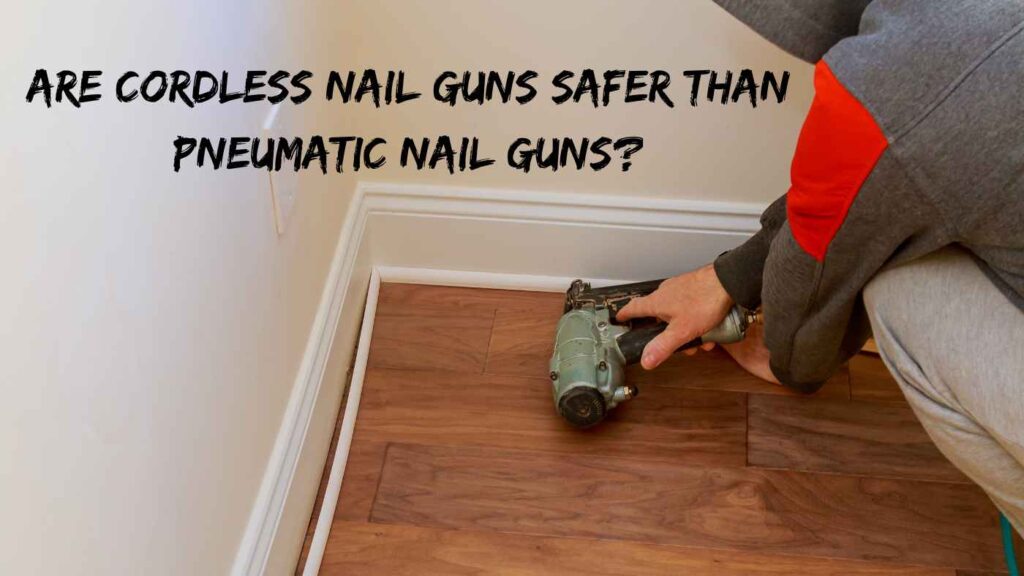
Plus, cordless models are more portable. It can be helpful when working in tight spaces or places where an air compressor is not available.
Pneumatic nail guns, which use compressed air to drive the nails, are more powerful and often used by professionals.
While these models can be very efficient, they also require careful management of the air pressure and hoses.
If the air pressure is not set right or the hose gets damaged, the nail gun might misfire or not work properly.
Pneumatic models also tend to be heavier which can make them harder to control.
Overall, whether a cordless or pneumatic nail gun is safer depends on the user’s experience and the type of project being done.
Are Nail Guns Safe for Framing and Heavy Duty Projects?
Nail guns are often used for heavy duty tasks like framing. But they come with extra risks. These jobs often require powerful tools that shoot larger nails into tough materials.
Because of the increased power, the risk of injury is higher if the nail gun malfunctions or is used incorrectly.
For professionals working on framing or other heavy-duty projects, it is crucial to follow all safety instructions and always use the tool’s safety features, such as the trigger lock and contact trip.
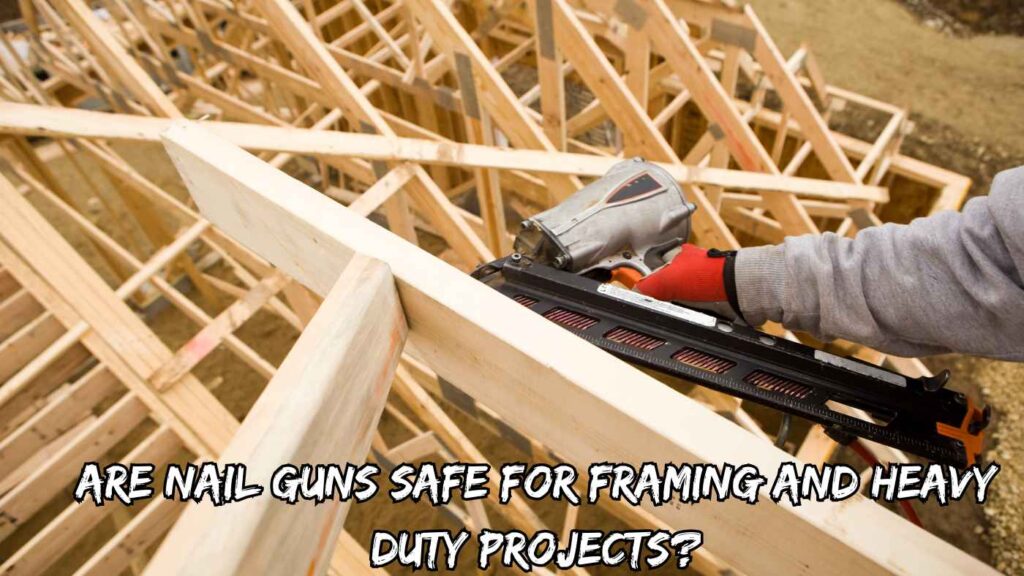
Proper protective gear, including goggles, ear protection, and sturdy gloves, is also necessary to prevent injuries.
The worksite should also be free of distractions and bystanders to reduce the chance of accidents.
Ensuring that the tool is in good condition, with the right air pressure and maintenance, is essential to prevent accidents on the job.
Are Nail Guns Safe in Humid or Wet Conditions?
Using a nail gun in wet or humid conditions can be risky for both the user and the tool. Moisture can cause slipping, rust, and even electric shocks based on the type of nailer.
Dangers of Using a Nail Gun in Wet Conditions
- Slipping Risk: Wet surfaces make it easier to lose grip on the nail gun. This risk will lead to accidents like misfires or dropping the tool from the hands.
- Rust & Damage: If water gets inside a pneumatic nail gun, it may cause rust and damage important parts.
- Electrical Shock: Battery-powered or electric nail guns should never be used in wet areas because they can cause electric shocks or short circuits.
- Wood Swells & Misfires: Wet wood absorbs water and makes it swell. This causes nails to misfire, bend, or jam the tool.
How to Use a Nail Gun Safely in Wet Conditions
Though it is not recommended to use a nailer in bad weather conditions, you may use it if it is inevitable. In this case, try to follow the below rules:
- Cover air compressors: If using an air-powered nail gun then cover up the compressor to protect it from rain and moisture.
- Prevent rust: Use oil or a rust spray on metal parts to stop rust from building up.
- Keep it dry: After working in a humid area, wipe down your nail gun with soft clothes and store it in a dry place.
- Wear slip proof gloves & shoes: This helps you hold the tool firmly and prevents slipping while working
Conclusion
Nail guns are powerful and efficient tools that save time and effort on many different projects, from home repairs to large scale construction jobs. However, like any power tool, they come with risks.
The good news is that with the right safety features, proper training, and protective gear, nail guns can be used safely.
Whether you’re a beginner, a DIYer, or a professional, it’s important to follow safety rules, use the tool properly, and maintain the tool in good condition to avoid accidents and injuries.
FAQs
What is the safest type of nail gun for beginners?
Ans: For beginners, a brad nailer or a smaller finish nailer is usually the safest choice.
These models are lighter and easier to handle, and they shoot smaller nails, which reduces the risk of injury.
Is it safe to use a nail gun in wet or damp conditions?
Ans: It is not safe to use a nail gun in wet or damp conditions. Moisture can damage the tool.
It also increases the risk of electrical shock. Always make sure the area is dry before using a nail gun.
